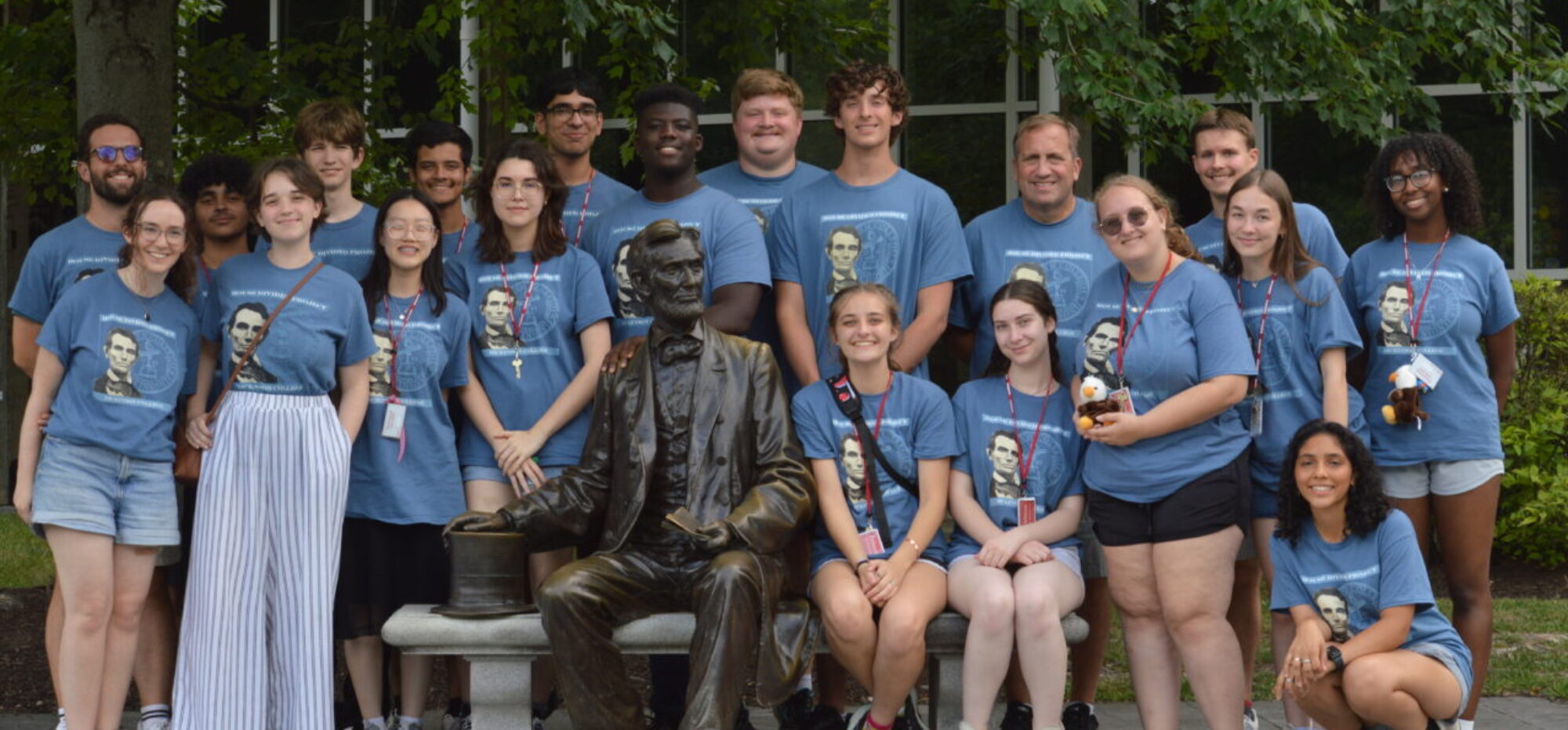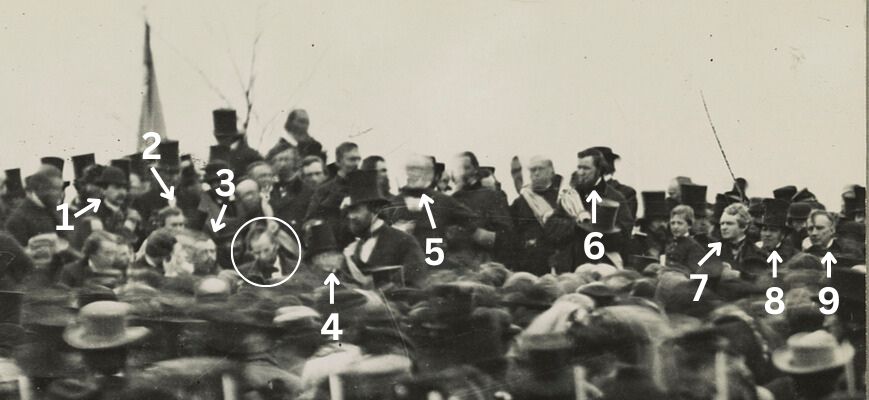The rebellion has been a rapid educator. Congress was the first to respond to the instinctive judgment of the people, and fixed the broad brand of its reprobation upon slave hunting in shoulder straps. Then came very temperate talk about confiscation, which soon came to be pretty radical talk. Then came propositions for Border State, gradual, compensated, colonized emancipation. Then came the threat of a proclamation, and then came the Proclamation. Meanwhile the Negro had passed along from a loyal spade and pickax to a Springfield rifle. —Frederick Douglass, “The Mission of the War” (January 1864)
Timeline of Freedom
- 1861 // Contrabands
- 1861-2 // Confiscation
- 1863 // Emancipation / Amnesty
- 1864-5 // Abolition
- 1865 and beyond // Equality
The Gettysburg Convention (Nov. 18-19, 1863)
1 = Wayne MacVeagh (PA Unionist chair) // 2 = John Hay (White House aide) // 3 = John Nicolay (White House aide) // 4 = William Seward (Secretary of State // 5 = Edward Everett (Main orator, former VP candidate in 1860) // 6 = John Forney (PA editor, Unionist // 7 = Andrew Curtin (PA Gov, Unionist // 8 = Horatio Seymour (NY Gov, Democrat) // 9 = David Tod (OH Gov, Unionist)
- Lincoln and Salmon P. Chase
- Lincoln and Sam Wilkeson
- Lincoln and Anna Dickinson
- Lincoln and Frederick Douglass
Abraham Lincoln believed that to “save the union,” he first had to build a Union party.

